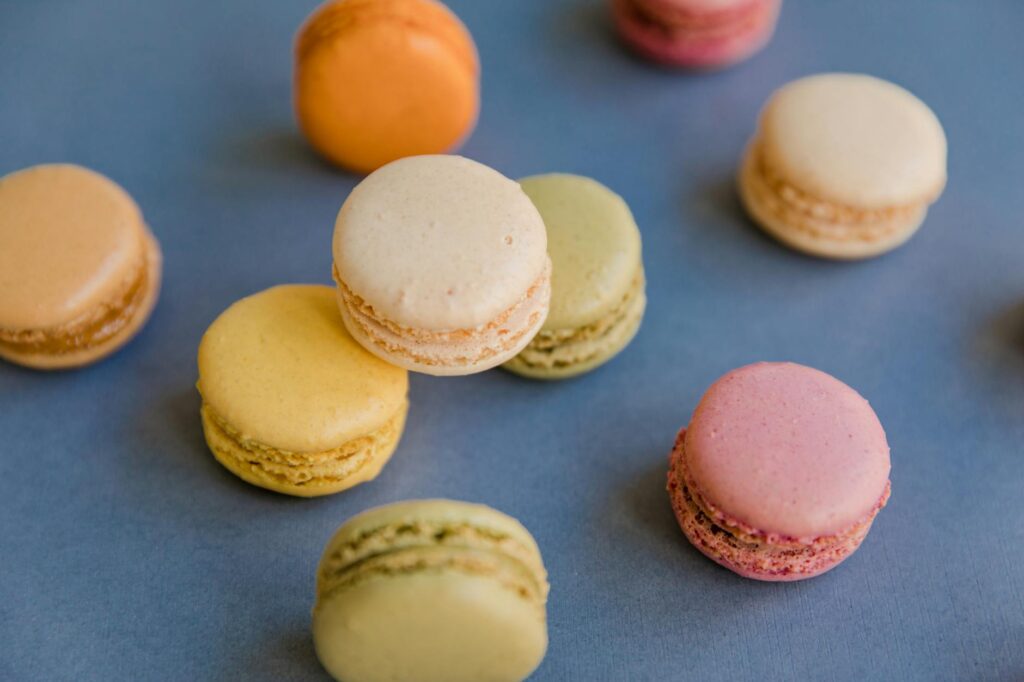The world of French patisserie is a realm of exquisite artistry, where delicate flavors dance on the tongue and visual masterpieces delight the eye. From the flaky layers of a croissant to the creamy richness of a crème brûlée, each pastry tells a story of tradition, passion, and unparalleled skill. Let’s delve into the romantic heart of this culinary tradition.
A History Steeped in Sweetness
The history of French patisserie is a long and fascinating one, stretching back centuries. Influenced by various cultures and evolving techniques, it has blossomed into the sophisticated art form we know and love today.  The development of specific techniques, such as the creation of puff pastry, revolutionized the possibilities of what could be created.
The development of specific techniques, such as the creation of puff pastry, revolutionized the possibilities of what could be created.
The Allure of the Croissant
Perhaps the most iconic of French pastries, the croissant, is a testament to the magic of layered dough. Its delicate, buttery layers and crisp exterior are simply irresistible. Learning to make the perfect croissant is a journey of precision and patience, a true testament to the dedication of French pastry chefs. This article delves deeper into the history of croissants.
Beyond the Croissant: Exploring Iconic Pastries
While the croissant reigns supreme, the world of French patisserie is far more diverse. Macarons, with their vibrant colors and delicate shells, are a testament to the artistry of the form. The éclair, a long, cylindrical pastry filled with cream, is another classic. And let’s not forget the delicate madeleine, a small sponge cake with a unique shell shape. 
The Art of the Macaron
The macaron is a marvel of precision and technique. The delicate balance of the meringue, almond flour, and sugar is critical to achieving that signature crisp exterior and chewy interior. Learn more about macaron techniques here on our site.
The Importance of Ingredients
The quality of ingredients is paramount in French patisserie. Using the finest butter, flour, and sugar ensures that each pastry achieves its full potential. The sourcing and selection of these ingredients is a crucial part of the process. [IMAGE_3_HERE]
Modern Interpretations and Innovation
While tradition is vital, French patisserie is constantly evolving. Modern chefs are experimenting with new flavors and techniques, pushing the boundaries of what’s possible. This balance between tradition and innovation is what keeps French patisserie so exciting and relevant.
The Romance of Presentation
French patisserie isn’t just about taste; it’s about the visual experience as well. The artistry of presentation is a key element, turning each pastry into a small work of art. From elegant displays to intricate decorations, the visual aspect adds another layer of enjoyment. Check out our gallery of beautiful pastries.
The Parisian Pâtisserie Experience
Stepping into a Parisian pâtisserie is an experience in itself. The aroma of freshly baked pastries, the dazzling displays, and the passionate dedication of the pâtissiers all contribute to the romance of it all. It’s a sensory feast that lingers long after you’ve finished your treat. [IMAGE_4_HERE] Find your perfect Parisian patisserie with this helpful guide.
The romance of French patisserie lies not only in the exquisite taste and artistry of the pastries but also in the rich history, dedication, and passion that go into creating them. It’s a tradition that continues to captivate and inspire, promising a delightful experience for all who indulge.
Frequently Asked Questions
What makes French pastries so special? The combination of high-quality ingredients, precise techniques, and a focus on both taste and presentation makes French pastries truly special.
Where can I learn to make French pastries? Many cooking schools and online resources offer classes and tutorials on French pastry-making. Here’s a good online course to get you started.
Are French pastries difficult to make? While some pastries require advanced techniques, many simpler ones are achievable for home bakers with a little practice and patience.
What are some popular types of French pastries? Popular types include croissants, macarons, éclairs, madeleines, and tartes.
What is the best way to store French pastries? Store pastries in an airtight container at room temperature or in the refrigerator, depending on the type of pastry.
